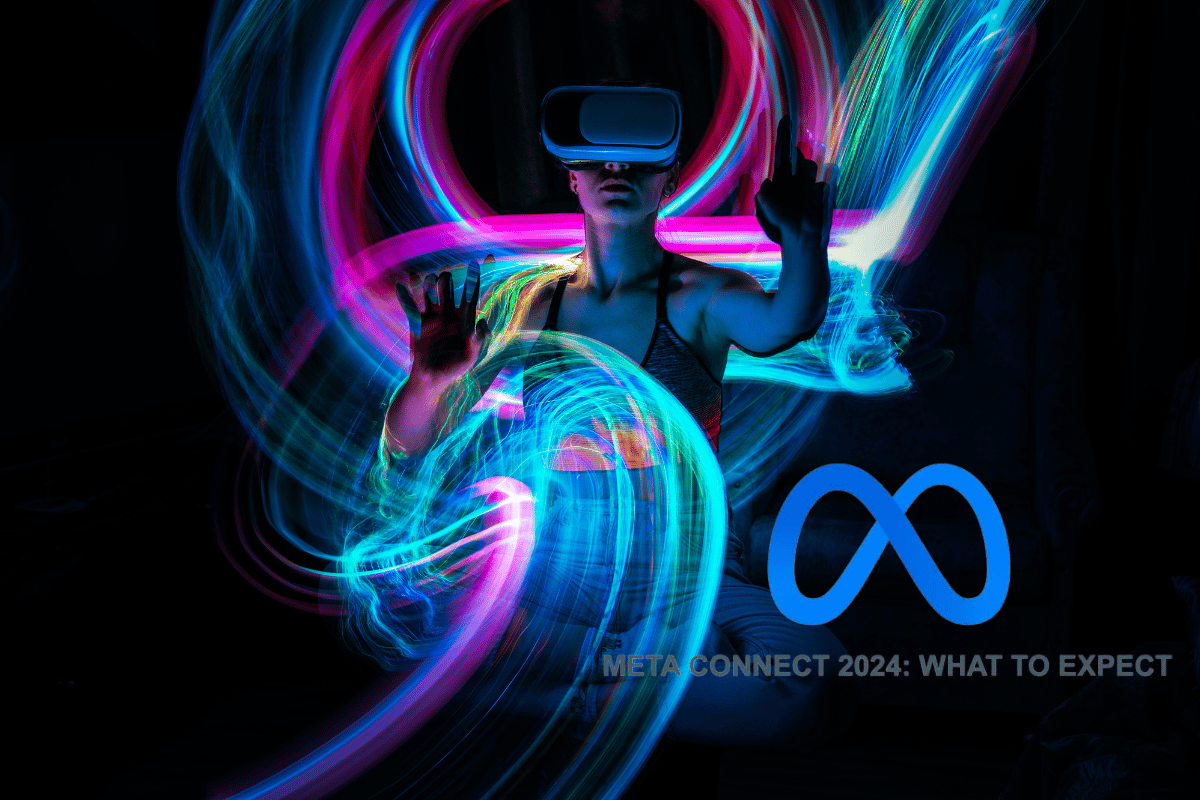Meta Connect 2024: How AI Integration in Smart Glasses Will Redefine User Experience

As the tech world gears up for Meta Connect 2024, the anticipation surrounding what Meta has in store is palpable. Known as Meta’s annual event focused on its Reality Labs division, Meta Connect has consistently been a platform for unveiling groundbreaking technologies in augmented reality (AR), mixed reality (MR), virtual reality (VR), and artificial intelligence (AI). However, This year, one feature is generating particular buzz: integrating Meta AI into wearable devices like the Ray-Ban smart glasses.
While Meta Connect has always pushed the boundaries of what’s possible in XR technology, the focus on AI’s role in these devices highlights a significant shift in how customers will interact with technology. The future of customer experience lies not just in the functionality of devices but in how AI enhances that functionality, creating seamless, intuitive interactions that make everyday tasks faster and easier. Let’s explore what this development could mean for user experience and why Meta’s approach is poised to change the game.
What is Meta Connect, and Why Should We Pay Attention?
Meta Connect has become one of the most important events on the tech calendar, offering a glimpse into the future of augmented and virtual reality. With a focus on innovation in XR technologies, Meta Connect serves as the stage where Meta showcases its latest developments, long-term projects, and visionary concepts that could shape the next decade of digital interactions.
At the heart of this year’s event will be Meta’s ongoing exploration of artificial intelligence in wearable tech. The introduction of Meta AI into products like the Ray-Ban smart glasses signifies more than just a technological upgrade; it represents a shift in how consumers engage with their devices. Meta is leveraging AI to make interactions more human, more natural, and ultimately more useful for customers.
AI and Smart Glasses: The Next Frontier in User Experience
The integration of Meta AI into wearable devices like the Ray-Ban smart glasses is where Meta’s vision for the future becomes tangible. Smart glasses have long been seen as a product of the future, but until now, they’ve remained relatively niche, with limited functionality and adoption. Meta’s plan to weave AI into this technology aims to change that by delivering a more intuitive, accessible, and powerful user experience.
For users, this means that smart glasses won’t just be about taking hands-free photos or listening to music—they’ll become a personal assistant, powered by AI, that enhances day-to-day activities. Imagine being able to ask your glasses for real-time information, manage appointments, and even edit photos or videos on the fly, all with simple voice commands.
Ultimately, the true impact of Meta AI in smart glasses will be felt in how it changes how customers interact with the world. For businesses, the potential applications are vast. Imagine retail employees using smart glasses to assist customers in real-time, providing immediate access to inventory or product information without breaking engagement. In healthcare, doctors could use smart glasses to access patient records or critical data during consultations, improving both efficiency and the quality of care.
For individual consumers, the integration of AI into smart glasses creates a more immersive, personalized experience. Whether you're navigating a new city, managing a busy workday, or capturing moments hands-free, Meta AI will streamline the process, enabling users to focus on what matters most while the technology handles the details.
Enhancing Customer Experience Through Seamless Interaction
The most significant promise of integrating Meta AI into smart glasses lies in the potential for seamless interaction. The AI will be designed to work intuitively with the user, responding to voice commands and providing relevant information in real-time. This kind of functionality isn’t just about convenience; it represents a new level of engagement between the user and technology.
Consider how Meta AI can improve everyday life. For example, while wearing the Ray-Ban smart glasses, a user could ask for directions, and instead of just receiving a static response, the AI could overlay visual cues in the real-world environment. Need to remember a task while you’re on the go? Your AI assistant can create reminders, adjust your calendar, and notify you of upcoming meetings without the need for manual input. The ease with which users can interact with their devices will fundamentally change how they perceive and use technology in their daily lives.
Bringing AI Out of the Cloud and Into Your World
One of the most exciting aspects of Meta AI’s integration into wearables is the ability to offer real-time responses without relying on a distant cloud server. By processing commands locally or with minimal latency, Meta AI will provide users with fast, reliable results, ensuring that interaction remains fluid and frustration-free.
This type of functionality also has the potential to redefine how we use smart devices. While current AI systems such as Apple’s Siri or Google Assistant have become ubiquitous in smartphones, they’re often dependent on internet connectivity and suffer from delays that can disrupt the user experience. Meta’s approach to AI in smart glasses, particularly with Ray-Ban, focuses on reducing these barriers, making sure that users have a smooth, immediate interaction with their AI assistant no matter where they are.
Privacy, Security, and AI: Building Trust with Consumers
Whenever AI is involved, concerns about privacy and data security are never far behind. Meta has faced its fair share of scrutiny in the past regarding how it handles user data, but with Meta AI, the company is putting a strong emphasis on maintaining user trust. The fact that Meta AI will process many commands locally on the device is a positive step toward ensuring data remains private and secure.
For consumers, this commitment to privacy will be essential in gaining widespread adoption. The smart glasses market has faced slow growth partly due to fears over surveillance and data misuse. By building security into the very fabric of Meta AI and ensuring that data doesn’t need to travel across networks unnecessarily, Meta can alleviate some of these concerns and encourage users to embrace the technology with confidence.
The Competitive Landscape: How Meta AI Stacks Up
While Meta AI is positioning itself as a leader in AI-powered wearables, it’s not without competition. Apple’s recent developments in AI with its Intelligence platform and Google’s Gemini upgrades have also set high expectations. However, Meta’s focus on integrating AI into hardware that people can wear and use daily could give it an edge in the race to dominate the next generation of personal computing.
Meta’s decision to make AI a key component of its hardware development is a strategic move to stay ahead of the curve. The ability to interact with AI directly through your glasses adds layers of convenience and utility that go beyond what other companies are currently offering. If Meta can successfully roll out Meta AI on a global scale, and improve features like speech recognition and image editing tools, it could position itself as the go-to brand for AI wearables.
In a Nutshell: The Future of AI Wearables Is Here
Meta Connect 2024 is set to showcase some of the most exciting developments in AI and wearable technology, and the integration of Meta AI into Ray-Ban smart glasses is one of the most promising advancements. By focusing on improving user experience through seamless interaction, enhanced functionality, and privacy-conscious design, Meta is positioning itself as a leader in the next generation of personal technology.
Want to stay updated on the latest in AI and wearable tech? Follow us for more insights and updates on how Meta AI and other emerging technologies are transforming the future of user experience.




